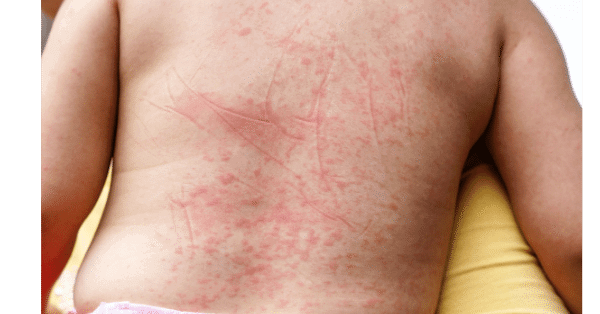Dengue fever – An overview
Dengue is the most important mosquito-borne viral disease in the world accounting for 22000 annual deaths worldwide. It’s highly prevalent in tropical countries of the world including South East Asia, Middle East and sub-Saharan Africa, and Central and South America. According to the WHO, about 50% of the world population is at risk of acquiring dengue infection.
Transmission of the dengue virus
There are two types of mosquitos that transmit the dengue virus. Namely, Aedes aegypti and Aedes albopictus. Both are highly prevalent in tropical and subtropical countries of the world and tend to bite the humans during the day time, both indoor and outdoor. When an Aedes mosquito bites an infected human, it becomes a carrier. The dengue virus multiplies inside their salivary glands. Once a carrier mosquito bites a human, the virus enters into the bloodstream of the person.
The appearance of the vector/ mosquito

Aedes mosquitos have several characteristic features that aid in their recognition. They are medium-sized mosquitos and have silver color bands on their bodies and legs. Aedes aegypti has a lyre-shaped silver mark on the body while Aedes albopictus has a linear silver mark on the body.
Symptoms and signs of dengue fever

Dengue fever has a spectrum of clinical presentations.
- Undifferentiated fever
- Dengue hemorrhagic fever
- Dengue shock syndrome
Common symptoms at the stage of the undifferentiated fever include
- Sudden onset high fever about 40-41 C
- Severe headache
- Joint and muscle pain
- Pain behind the eyes
- Throat pain
- Vomiting and nausea
- Fatigue
- A reddish rash typically on the 3rd day of fever
The symptoms mimic a common viral fever or flu. Most of the infected people recover at this stage with or without being diagnosed of having dengue infection. Fever usually lasts 2-7 days but never exceeds 10 days. Another rash may appear once the fever has been settled. It indicates the convalescent period.
Progression of dengue infection
A minority of people infected with the dengue virus may progress to the next stage, the dengue hemorrhagic fever in between the 4th to 6th day of fever. This stage is characterized by plasma leakage from the blood vessels and a marked reduction in urine output. Leaked plasma accumulate inside the body cavities interrupting the respiratory, gastrointestinal and cardiovascular functions. Simultaneously, bleeding may also start to appear (gum bleeding, blood in urine or stools). Collectively this phase is known as the critical phase of dengue fever. Typically, the critical phase doesn’t last more than 48 hours.
The very end of the spectrum is dengue shock syndrome (DSS). Acute multi-organ failure as a result of the blood and plasma lose is the key feature of DSS.
Dengue virus has four serotypes. Each serotype infects a person only once. Therefore, in total, a person can be infected with the dengue virus 4 times. What’s important about this is, each infection increases the severity of the subsequent infections. It’s thought to be due to an antibody-dependent enhancement of the virus.
Diagnosis of dengue fever
The commonly known marker of the Dengue viral infection is a fall in platelet count (below 150 000). This can also happen following many viral infections. Still, the platelet count is an accurate marker of the severity of the infection. As the patient progresses from dengue fever to dengue haemorrhagic fever and DSS, platelet count falls rapidly from about 120 000 – 100 000 to even below 10 000.
The best diagnostic method of dengue fever is the antigen or antibody detection in the blood. The antigen (NS1 antigen) becomes positive from the 1st day of fever and remains positive until the 3rd day of fever. The IgM antibody against dengue fever becomes positive around the 5th day of fever and remain positive for a long duration.
Treatments of dengue fever
Dengue infection currently has no specific medical or surgical treatment. As long as the patient remains in the undifferentiated fever stage, antipyretics and analgesics are the main way of treatment. However, the patient should not be treated with NSAIDs class drugs (Aspirin, diclofenac, etc.) as it can aggravate dengue haemorrhagic fever.
If the patient has proceeded to the haemorrhagic stage, aggressive interventions are needed. Prompt fluid resuscitation assures patient recovery within 48 hours. Rarely, less than 1% of the patients may progress to the DSS. At this stage patient outcome is generally poor.
Prevention of dengue fever

- Immunization
- Use of mosquito repellents
- Destroying mosquito breeding places
- Wear long-sleeve shirts and trousers when traveling in dengue-endemic areas
- Hospital admission if you are having more than 3 days of fever
